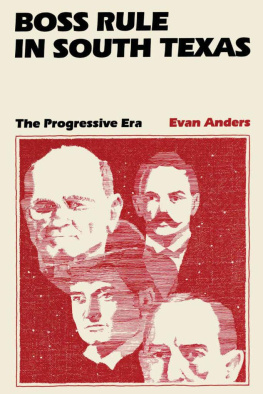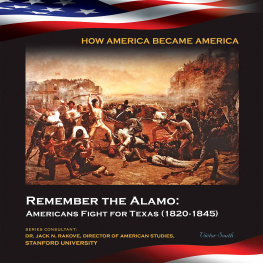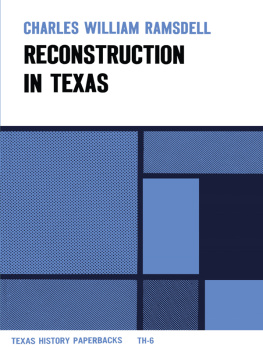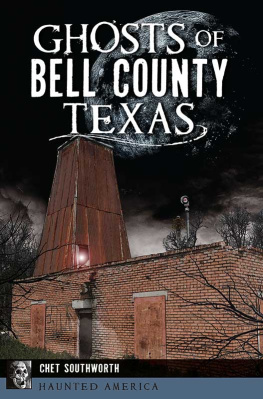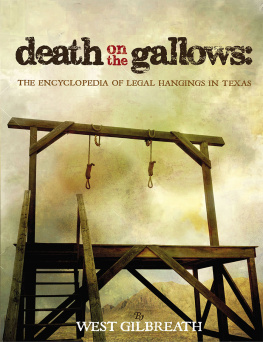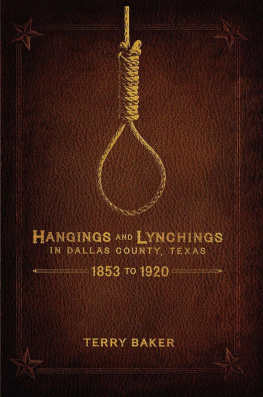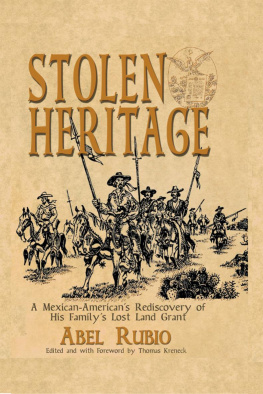Boss Rule in South Texas
THE PROGRESSIVE ERA
by Evan Anders

UNIVERSITY OF TEXAS PRESS
AUSTIN
For Betty, Robert, and Cecily
Copyright 1979 by Evan Marcus Anders
Copyright 1982 by the University of Texas Press
All rights reserved
Printed in the United States of America
First Edition, 1982
Publication of this book was assisted by grants from
The University of Texas at Arlington and
The Littlefield Fund for Southern History, The University of Texas at Austin.
Requests for permission to reproduce material from this work should be sent to Permissions, University of Texas Press, Box 7819, Austin, Texas 78712.
LIBRARY OF CONGRESS CATALOGING IN PUBLICATION DATA
Anders, Evan, 1946
Boss rule in South Texas.
Bibliography: p.
Includes index.
1. TexasPolitics and government18651950. 2. Progressivism (United States politics) 3. Wells, James B., 18501923. 4. Parr, Archie, 1860 or 611942. I. Title.
F391.A5 976.406 82-2701
ISBN 0-292-70736-3 AACR2
ISBN 978-0-292-70763-4 (paperback)
ISBN 978-0-292-73336-7 (library e-book)
ISBN 978-0-292-73337-4 (individual e-book)
DOI: 10.7560/707368
Contents
Introduction
DURING THE DECADES following the Civil War, boss rule emerged as the pervasive pattern of politics for American cities. Characteristically, the political boss centralized government authority by filling city offices with men willing to follow his orders. Patronage became the lifeblood of the machine. The prospect of political jobs attracted a large following of campaign workers, while the assessment of contributions from the salaries of city officials and employees filled the party coffers. Business allies received lucrative contracts and franchises for public utilities and repaid the machine with kickbacks. Although contemporary reformers attacked the bosses for destroying the professional standards of the city bureaucracies and for looting the public treasuries, historians and social scientists have recently rehabilitated the reputations of these much maligned politicians. Without contesting the charges of corruption, modern analysts argue that the urban chieftains often provided desperately needed services for their diverse constituencies. At the same time, historians are reevaluating the claims of the progressive reformers that their sole motivation was a disinterested commitment to protect the public interest.
Social scientist Robert Merton has supplied the basic model for overhauling traditional interpretations of boss rule. In addition to indulging in graft, the urban machines also performed a variety of constructive functions: social welfare benefits for the downtrodden, particularly immigrants; a channel of upward mobility for ambitious members of these suppressed groups; special privileges for businesses, such as franchises and the elimination of red tape. Recent historians have argued that boss politics was the inevitable product of the rapid, chaotic process of urbanization during the late nineteenth century. Suffering from the crippling diffusion of power among city officials and from the interference of rural-dominated state legislatures, municipal governments could not meet the needs of the
This form of government came under sharp attack during the Progressive Era. Reformers denounced the bosses as corruptionists and tyrants, who squandered public funds and subverted the democratic process by monopolizing power and manipulating the ignorant immigrant voters. Despite the progressive promises to bring the government closer to the people, Samuel Hays argues that reform campaigns in many cities transferred power to newly formed business and professional elites, whose influence had remained limited under the boss system. Instead of legitimizing all the necessary functions of the machines, the municipal insurgents promoted structural changes in government, which restricted the political participation of the lower classes, reduced government expense and waste, and advanced their own economic interests. The moralistic appeals of the progressive crusaders for clean, democratic government masked fundamental social and economic conflicts.
Although Hays, Merton, and other students of machine government have limited their studies to urban politics, their findings provide an analytical framework for examining boss rule in a quite different settingthe South Texas counties of Cameron, Hidalgo, Starr, and Duval during the late 1890s and the early twentieth century. The problems of governing in these rural, small-town communities were much less complicated, but there emerged a system of Democratic machines that broadly conformed to the Merton model.
The network of county organizations provided basic social and economic services to an economic elite of ranchers and merchants and to a lower-class mass of Mexican American laborers, farmers, and ranch hands. Political success rested upon control of the Hispanic votes and access to patronage. Even though the bosses had faced recurrent Republican opposition and Democratic factional divisions since the end of the Civil War, the challenge to machine domination in South Texas assumed new force during the Progressive Era. The insurgents own efforts to manage Mexican American voting blocs and their reliance on the federal customs house as an organizational base reflected the continuity of twentieth-century agitation with past opposition. Yet two developments transformed the political landscape. The challengers eventually embraced the popular reformist rhetoric of the period, and, more fundamentally, they rode the tide of an economic revolution in South Texas. With the completion of a railroad network through the region and the advent of large-scale irrigation, the citrus and truck farming boom swept the Lower Rio Grande Valley and attracted thousands of new settlers. In accordance with the Hays analysis, the reform movement represented an upwardly mobile economic class, and its main aim was to restrict the political participation of the lower-class voters, who had sustained the established order. As a result of these forces, political conflict in South Texas came to a head during the first two decades of the twentieth century.
To be complete, the study of South Texas politics must explore not only the mechanics of the county rings and the nature of their local opposition but also the careers of the Democratic bosses who organized the machines, the influence of these men on state and national politics, the special relationship between the bosses and the Texas Rangers, the role of Mexican Americans in shaping regional politics, and the prevalence of violence and racial tension along the border. Four figures stand out in the political drama that unfolded in this volatile frontier setting: James Wells, who consolidated boss rule in Cameron County and emerged as a leading spokesman for the conservative wing of the state Democratic party; Archer (Archie) Parr, whose ruthless tactics and misuse of public funds in Duval County established him as one of the most notorious corruptionists in the history of the state; Manuel Guerra, a Mexican American rancher and merchant whose authoritarian domination of Starr County was indistinguishable from the practices of his Anglo counterparts in the other border counties; and John Nance Garner, who served the interests of these bosses during the formative years of his congressional career. To understand these politicians and the partisan battles that they waged during the Progressive Era, one must first review the social and economic history of South Texas and the operation of boss rule before 1900.
The four counties of Cameron, Hidalgo, Starr, and Duval fall within the Trans-Nueces region, which is bordered by the Nueces River on the north and the Rio Grande on the south. The first three counties lie along the Rio Grande and form the Lower Rio Grande Valley, occupying the southeastern corner of Texas. The Valley takes shape as the flood plain of the Rio Grande expands into a broad delta plain, which follows the twisted course of the river for 250 miles to the Gulf. (Two hundred and fifty miles is the navigational distance of the river from the point at which the Lower Rio Grande Valley forms in the west to the mouth of the river, and this figure includes the measurement of all the twists and turns in the river. All other river measurements in the book are navigational distances.) Until the county reorganizations of 1911 and 1913, Duval County bordered the western-most Valley county of Starr on the north. Irrigation converted most of the Lower Rio Grande Valley into a fruit and truck farming bonanza, but before 1900 grasslands and stretches of chaparral covered the whole Trans-Nueces region. Modest rainfall limited earlier agricultural development, and cattle and sheep ranching dominated the South Texas plains.
Next page
